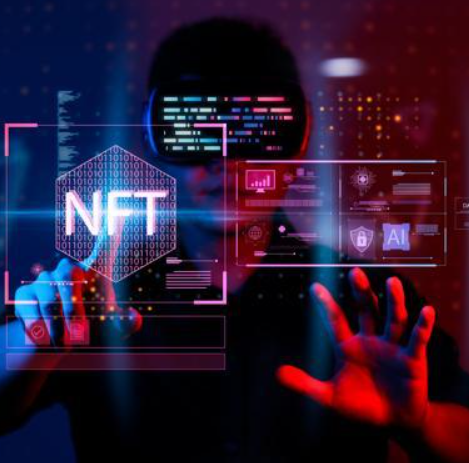Rug Pulls in Crypto: What They Are and How to Protect Your Investments
- 74 Views
- admin
- 12/29/2024
- Cryptocurrency
Cryptocurrency offers exciting opportunities, but it also comes with significant risks. Among the most damaging schemes in the space is the “rug pull,” a tactic where dishonest project creators abandon a venture and escape with investors’ money. Understanding how these scams work—and how to avoid them—is essential for anyone participating in crypto trading.
What Exactly Is a Rug Pull?
In the crypto world, a rug pull happens when a project’s developers drain liquidity or funds from a token and disappear, leaving investors with assets that are practically worthless. This fraud typically takes place in decentralized environments, such as DeFi or meme coin launches, where oversight is limited and new projects often appear overnight.
Rug pulls rarely occur on large, centralized exchanges. Instead, they are commonly associated with tokens available only on decentralized platforms. Because these environments lack vetting procedures, investors must rely on their own research before making decisions.
How Do Rug Pulls Unfold?
These scams typically follow a pattern:
- Setup: Scammers create a new token, complete with an appealing website, roadmap, and whitepaper to appear legitimate.
- Promotion: They launch an aggressive marketing campaign, often using social media influencers or community hype to attract buyers.
- Investor FOMO: The price of the token begins to climb as people rush to buy in, believing it to be the next big opportunity.
- Exit: Once enough capital is locked in, the creators either dump their tokens on the market or exploit the smart contract to extract funds.
- Disappearance: After the rug is pulled, the team vanishes, social channels are deleted, and investors are left with unusable tokens.
Common Types of Rug Pulls
There are a few variations of rug pulls:
- Hard Rug Pulls: These are abrupt and destructive. The project collapses almost immediately after enough money is collected. Liquidity is removed in one go, leaving investors with valueless tokens.
- Soft Rug Pulls: Here, developers gradually drain liquidity or sell off large token holdings over time, making it harder to detect the scam early.
- NFT Rug Pulls: Scammers launch NFT collections, generate sales, and disappear. Investors are left with digital assets that have no utility or resale value.
Red Flags to Watch For
If you’re thinking about investing in a new crypto project, keep an eye out for these warning signs:
- Anonymous Team: If the developers can’t be traced or verified, proceed with caution. Reputable projects are typically transparent about their leadership.
- Unrealistic Promises: Guaranteed high returns or “risk-free” profits are classic signs of fraud.
- Lack of Detailed Information: Projects that don’t have a clear roadmap or an informative whitepaper often turn out to be scams.
- No Audit Records: If a project hasn’t undergone independent smart contract audits, it’s difficult to trust its security and intent.
How to Protect Yourself from Rug Pulls
Avoiding these schemes requires vigilance and smart investing practices:
- Conduct Thorough Research: Read everything available about the project, including whitepapers, roadmaps, and third-party reviews. Confirm the team’s identities and backgrounds.
- Check Liquidity and Audits: Look at how much liquidity is locked and whether the smart contract has been professionally audited. Trustworthy projects typically publish these results.
- Use Blockchain Analysis Tools: Platforms like Token Sniffer or DEXTools can reveal suspicious activity or code vulnerabilities.
- Be Wary of Hype: Popular new tokens may seem promising, but don’t rely solely on community buzz. Hype can often mask underlying issues.
Is It Illegal?
Yes. While the legal framework around crypto varies by country, rug pulls typically violate fraud laws and consumer protection regulations. As global authorities increase their focus on digital assets, more legal action is being taken against perpetrators. Still, recovering funds can be extremely difficult, especially when anonymity and decentralized systems are involved.
Notorious Rug Pull Incidents
Several high-profile scams have rocked the crypto world:
- MANTRA ($OM): In 2025, the token’s value dropped by over 90% in a single day. While the team claimed outside interference, many suspected insider manipulation.
- Squid Game Token (SQUID): Inspired by the TV show, this token soared in popularity before its creators locked users out of selling and ran off with the funds.
- AnubisDAO: With no website or whitepaper, this project still raised over $60 million before disappearing without a trace.
- BitPetite: After attracting investments with promises of high returns, the developers drained the liquidity pool and vanished shortly after launch.
- KISHU: A meme coin that generated interest before collapsing, reportedly due to liquidity drainage by its anonymous developers.
- Mutant Ape Planet (MAP): An NFT scam led by a French national who copied an existing project and ran off with nearly $3 million. Legal action followed after his arrest in the U.S.
Can AI Help Prevent Rug Pulls?
Artificial intelligence is beginning to play a role in identifying scams before they happen. Algorithms can analyze smart contract code for vulnerabilities and monitor transaction histories for patterns associated with fraudulent activity. AI tools may also evaluate project teams by reviewing their online presence, behavior, and engagement with the crypto community. These insights can help investors spot questionable projects early on.
Final Thoughts
Rug pulls are one of the most damaging forms of fraud in the crypto space. While decentralized finance opens up many opportunities, it also leaves room for malicious actors to operate unchecked. By staying informed, verifying every detail, and using available tools, investors can better protect themselves from falling into these traps. Ultimately, caution, research, and a skeptical eye are your best defense.
Recent Posts
- How AI is Revolutionizing Architectural Design: A Look at Tools, Trends, and the Future
- Streamlining Cyber Risk Assessments Through Automation
- Understanding the Difference Between Blockchain and Distributed Ledger Technology
- Is Bitcoin Mining Still a Viable Venture in 2025?
- Exploring AI: Unveiling Possibilities, Challenges, and Future Implications


